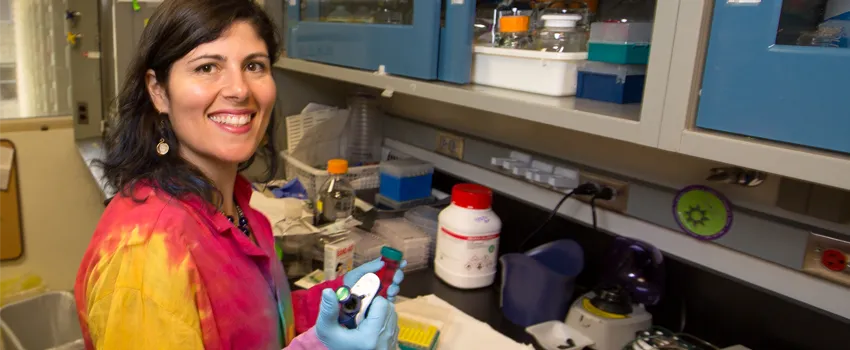
Photo by Norbert von der Groeben.
Stanford Medicine Scope - January 23rd, 2017 - by Ruthann Richter
What is the most deadly animal in the world, when it comes to human disease? Some might be surprised to learn that it’s a bug: the ubiquitous and irritating mosquito. Mosquitoes kill about a million people a year and cause a multitude of problems for millions more, including blindness, neurologic problems and disabling joint disease.
“It all comes down to this bad girl,” infectious disease expert Desiree LaBeaud, MD, said of the female mosquito, Aedes aegypti, which is responsible for so much human suffering.
Last week, LaBeaud described a project in Kenya to help keep mosquitoes at bay and prevent widespread illness. She was among a host of speakers at a day-long global health convening, sponsored by Stanford’s Center for Innovation in Global Health.
Medical School Dean Lloyd Minor, MD, opened the day’s program, emphasizing the importance of prevention in global health, as well as treatment of acute illness. “We view our unique opportunity here to use precision medicine as a foundation but not stopping there and taking it to an important next level,” he said. “And that has to incorporate precision health, applying tools to prevent diseases, diagnose them early and treat them more effectively with fewer side-effects and complications.”
In her research in Kenya, LaBeaud has found that as many as 20 percent of young children in the East African country are exposed to mosquito-borne viruses, including dengue, Zika and chikungunya. Among adults the figure is even higher: between 35 and 50 percent, she said. Dengue fever can be deadly. Zika can “melt babies’ brains,” she said, causing severe neurologic complications. Chikungunya can lead to joint problems and long-term arthritis.
All three illnesses typically begin with a fever, which is often mistaken for malaria. “Many children are getting malaria drugs but they have no malaria,” she told me during a break. “Because fever equals malaria in the minds of many health care workers. So there is a lot of misuse of drugs.”
One of the frustrations of dealing with these mosquito-related illnesses, she said, is that there are no vaccines, antivirals or other treatments. So prevention is the only option.
For malaria, the common prevention tool is bed nets to keep mosquitoes away during the night. But bed nets don’t work to prevent other diseases: The mosquito responsible for them is a nervous, day-time feeder that hops from person to person, requiring at least 4 or 5 people for a full meal.
So LaBeaud and her colleagues at MOH-Kenya, the Kenya Medical Research Institute and the Technical University of Mombasa have devised a prevention project at multiple sites around Kenya, working with community groups, non-governmental organizations and schools to educate people about how to prevent mosquito breeding in local water sources. Standing water, particularly in buckets and jerry cans typically used for water storage, offer an ideal breeding ground for the insects. Simply covering the buckets or cans can disrupt the breeding process. Removing unused standing water in tires or other common hiding places is another way to help thwart the insects, she said.
“We want to take this invisible risk and make it visible – really expose the risk to these communities and empower them to take steps to minimize these diseases,” she told the crowd of students and faculty.
LaBeaud and her colleagues, led by Jenna Forsyth, a PhD student in E-IPER at Stanford, literally plan to go door-to-door this summer in several Kenya communities to alert residents of these simple precautions. They also have devised a curriculum for schools, using art and other child-friendly tools, to educate children about mosquito hazards. She hopes to scale up the program to other schools around the country and integrate it into the national school curriculum. She and her colleagues also hope to change social norms about water storage, to help keep mosquitoes in check for good.
The work is funded by a Bechtel-Bass Faculty Scholar Award and the National Institutes of Health.

